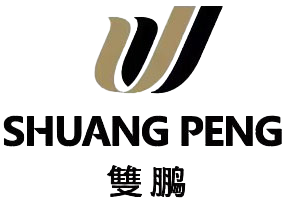Nadpis: Textilný preplétaný materiál pre poľnohospodárstvo hraje kľúčovú úlohu v jarnom orí
V rušnom období jarého orí sa po celom kraji angažujú farmeri v dôležitej práci pripravovania pôdy na nové úrody. Medzi mnohými nástrojmi a materiálmi, na ktoré sa spoliehajú, sa stávajú textilné plátna pre poľnohospodárstvo nevyhnutnou súčasťou pre ochranu.
Textilné plátna pre poľnohospodárstvo, tiež známe ako agrotexniky, sú vyrobené z rôznych syntetických a prírodných vlákien. Tieto plátna sú navrhnuté tak, aby poskytovali viacero výhod počas procesu poľnohospodárskej činnosti. Jedným z hlavných použití počas jarého orí je ochrana pôdy. Keďžto farmeri orú pôdu, je táto zraniteľná voči erozii spôsobenej vetrom a vodou. Textilné plátno pre poľnohospodárstvo môže byť položené na pôde, fungujúc ako štít. Predchádza tým odnášaniu horného vrstvy pôdy silnými vetrami, čo je obzvlášť dôležité v oblastiach so značne volnou pôdou alebo v vítrnych regiónoch.
Navíc pomáha znížiť odtek vody, čo umožňuje pôdeľa lepšie uchovávať vlhkosť. To je kľúčové pre výsadbu a rast nových semien, pretože dostatočná vlhkosť je hlavným faktorom úspešného zavedenia plodín.
Ďalšou výhodou týchto látky pri jarom oru je kontrola plevela. Plevel súperí s plodinami o živiny, vodu a slnečné svetlo, čo môže významne znížiť výnos plodín. Pokrývaním pôdy textílnym plátnom na poľnohospodársku úžitok sa môže slnečné svetlo zabrániť v dostupnosti k semenám plevela, čo ich bráni v prekvetnutí. Táto nechemická metóda kontroly plevela je nie len ekologicky príznivá, ale aj ekonomická na dlhú dobu pre poľnohospodárov.
Ďalej môže použitie textílnych pláten v poľnohospodárstve prispieť aj k lepšej regulácii teploty v pôde. V predvečernom jari môže byť teplota ešte dosť premenná. Textilná plátna môže slúžiť ako izolátor, udržiavajúc pôdu na relatívne stabilnej teplote. To je prospešné pre rast semen a mladých rastlín, keďže sú citlivejšie na teplotné kolísania.
Pre mnohých poľnohospodárov bola adopcia textílnych plátien v poľnohospodárstve hrou v živote pri ich jarých orácnych činnostiach. Pán Li, poľnohospodár z dediny, povedal: "V minulosti sme museli čeliť veľa problémom, ako sú erozia pôdy a nadmerný rast plevela. Ale od chvíle, keď sme začali používať tieto textilné pláteny, sú naše polia v oveľa lepšom stave a máme väčšiu sebedôveru v súvislosti so zbromaním."
Avšak široké využívanie textilných pláten v poľnohospodárstve prináša aj niektoré výzvy. Jednou z hlavných problémov je správne likvidovanie použitých plátien. Keďže sú väčšinou vyrobené z syntetických materiálov, ak sa nezachová ich správne zaoberanie, môžu spôsobiť environmentálnu záporu. Výrobci a poľnohospodárske oddelenia spolupracujú na nájdení riešení, ako napríklad podpora recyklácie týchto plátien alebo vývoj biodegradabilných alternatív.
V závere, keď pokračuje jarné oranie, textilné pláte pre poľnohospodárstvo zohrávajú stále dôležitejšiu úlohu v modernej poľnohospodárskej praxi. Ich viacstranné funkcie v ochrane pôdy, potlačovaní plevela a regulácii teploty pomáhajú poľnohospodárom zlepšovať kvalitu ich pozemkov a zvyšovať výnosy úrodu. Aj napriek výzvam s ohľadom na ochranu životného prostredia, s kontinuálnym výskumom a vylepšovaním, očakáva sa, že tieto pláte budú v budúcnosti prinašať poľnohospodárstvu ďalšie výhody.

